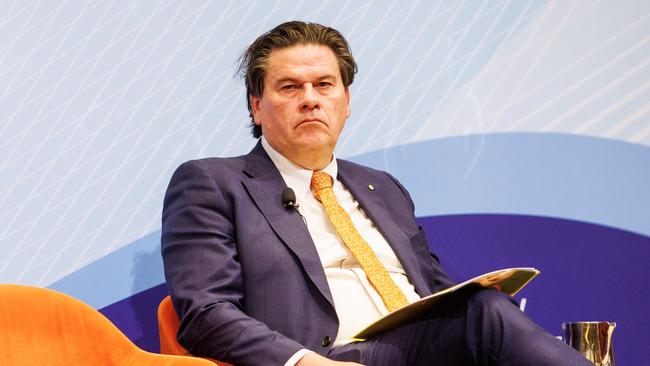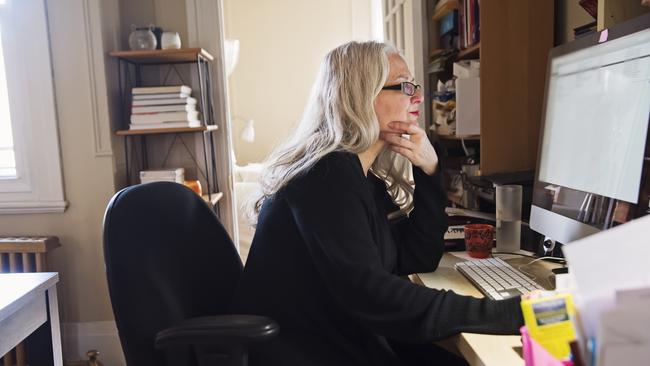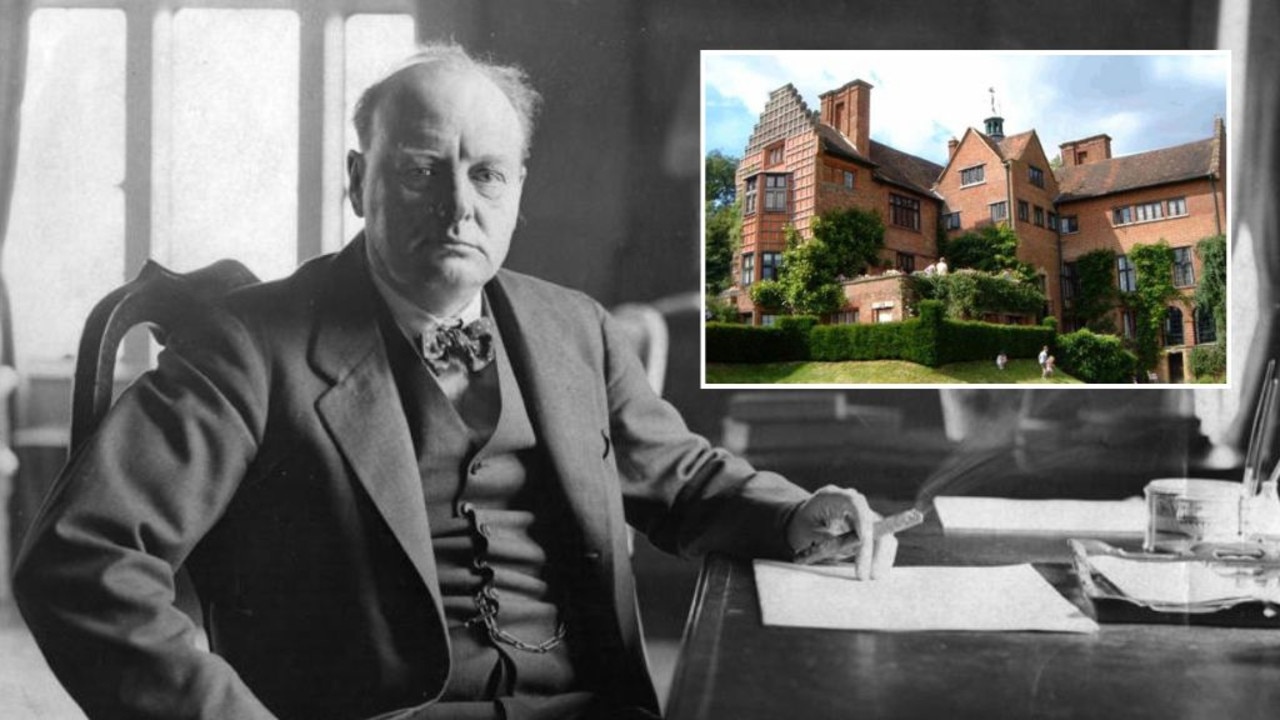Is business ready for the ‘second act’ in WFH drama?
With both sides of politics now backing flexible work, business is being left to chart the course on its own. With two main factors complicating the challenge, the focus is now on how to shift an IR system to fit modern-day reality.

Working from home arguably ruined Peter Dutton’s career but our elected representatives are not about to risk a repeat. Indeed, the politicians have stepped away from the kerb; business is on its own as it navigates the new world of work.
This week the Coalition drew a line under its disastrous campaign to force federal public servants back to their desks and joined Labor in supporting the flexible arrangements that have transformed workplaces since the Covid-19 lockdowns.
New opposition productivity and deregulation spokesman Andrew Bragg went further, arguing WFH could be “a very productive way for people to work” – a brave statement given the ambivalent research findings on WFH’s effect on efficiency.
The lack of political support for traditional work reflects – and influences – public opinion but Innes Willox, the chief executive of peak employer body the Australian Industry Group, is sanguine about the opposition’s flip.

The world has moved on and Willox tells Inquirer: “The great majority of companies understand blended work is here to stay for that cohort of workers – basically white-collar workers – who can do it.”
The focus now is how to shift the industrial relations system away from laws that are no longer fit for purpose and develop new models for hybrid workers who spend two or three days a week at home.
Says Willox: “Essentially, since Covid, we’ve had a work from home free-for-all which is now starting to get more structure and shape around it.
“The IR system is not set up for work from home or flexible work; the award system is set up around nine to five work basically.”
The effort to deal with reality is well under way. Since August 2024, the Fair Work Commission has been reviewing the Clerks – Private Sector Award to test its relevance for 21st-century work.

The case is expected to run all year with the likely result being a clause that will “remove any existing impediments” to WFH and that could be used as a model for other awards.
The hearings and submissions from employers and unions are part of a big conversation that Willox says is leading to the “second act” in the WFH story.
“I think businesses now understand that on the days where people are working from home, it’s about output, it’s not about hours, because people do work differently from home,” he says. “They work in a different structure and we need to adjust the IR system to fit that.
“We’re trying to come up with the solution that allows people to work from home without having to record their hours, sort of Bundy-clock style, particularly when they earn 25 per cent above the award. Those who dislike us take the view that we’re trying to strip away entitlements, but that’s not what we’re trying to do here. We’re just trying to update an award to fit modern-day reality. Working habits have changed and there has to be some give and take as we work through this.”
The give and take from the union side is a request to the Full Bench for a “right to request” WFH. At present, employers can knock back requests on legitimate and reasonable business grounds but an embedded right would demand more formal processes.
It’s something that worries the Australian Chamber of Commerce and Industry, whose chief executive, Andrew McKellar, tells Inquirer his organisation has reservations about a legislated right because it would be prescriptive.
“We just simply say, look, if there’s going to be such a term (the clause) in awards, it should be facilitative,” he says. “It should allow for employers and employees to arrive at mutual agreement on what suits and there should be an ability to provide for whatever flexibility is required.”

McKellar’s members hold varying views on WFH: “There are some employers who really embrace the flexibility and would agree it has big benefits for them and for their employees, in terms of employee satisfaction and morale and engagement and even productivity. And there would be others who would say they’re concerned about the balance going too far in one direction.”
While employers have the right to direct where staff are located, it boils down to how hard they want to go in enforcing directives. Willox says some companies have told employees they can work remotely but must live close enough to get to the office the following day. He says businesses in major cities are “finding it harder to get people to turn up, but for those in the outer suburbs or in regional areas it’s not such a big problem. The commute has a fair bit to do with it.”
What’s particularly challenging in the second act of WFH is the presence of two other factors: flatlining national productivity that no one really seems to know how to shift; and the artificial intelligence that companies hope will drive profits.
The challenge for the workers using hybrid is that many are in the frontline of the AI threat. Will they be forgotten if they don’t turn up in the office? Is AI the carrot employers can use to encourage workers back to a central workplace or will centralisation be even less important as the technology develops further?
Then there’s productivity. Some employers argue the “free-for-all” of recent years has damaged productivity, not necessarily because workers skive off but because connections are lost in workplaces, and mentorship and leadership are more difficult.

Says Willox: “(WFH) plays into the productivity equation, but how much nobody knows. It hasn’t been quantified. The (Productivity Commission) has said it doesn’t make a difference. Different employers will give you different stories, but it hasn’t really yet been quantified.”
Swinburne University research for the Fair Work Commission found employers cited productivity as the reason for rejecting WFH in 35 per cent of cases; but in 42 per cent of cases cited it as the reason for allowing staff to work at home. A recent report from the Productivity Commission noted the Covid-19 lockdowns had resulted in a “peculiar” productivity boost but that we are now back to the “stagnant status quo”. It suggested we need to look beyond WFH to “address the long-term drivers of the decline, such as the long-term decline in investment and business dynamism, and improving the diffusion of ideas and innovation to move all firms closer to the productivity frontier”.
For now, Willox argues that if WFH is to be a permanent part of the workplace, we need firm structures around it to allow it to occur. He warns companies might be “quite demanding” about staff setting up home workspaces to minimise the risk of accidents and compensation claims
“How intrusive can a business be in your home life to ensure it’s a safe working environment is a very much unresolved question,” he says. “If we’re talking about investment (for productivity) should business be investing more in people’s houses?”
There’s much to navigate, especially as companies must now take responsibility for the “psychosocial health” of employees.
“If you’re working from home and haven’t turned up to an office for two years and suddenly you put a psychosocial health claim because of loneliness or whatever, I mean, where does that leave your employer?” Willox says.
Then there’s pay. A recent report from the Committee for Economic Development of Australia found that since 2020, hybrid and remote workers earn almost 6 per cent less than those who don’t work from home. It argued “these findings clearly reflect the value employees attribute to working from home”; in other words, workers consciously trade pay for flexibility.
CEDA economist James Brooks tells Inquirer: “We believe it’s a very broad filtering in the market where people are taking the jobs they want or they’re not bargaining as hard for extra pay.”
Or is it because their invisibility damages their chances of a pay rise?

“The research does show that people who are out of sight of their managers when they’re working from home are less likely to be promoted, and that may have nothing to do with their core competencies either,” Brooks says. “It’s an emerging thing for all organisations to deal with. How do we manage these remote and hybrid teams? It’s not something lots of organisations have had a lot of practice in, and there’s not a body of literature we can go and turn to (to learn) best practice.”
Maybe, but on the ground employers and unions are marking their territory and juggling challenges around the impact of technology in many sectors.
WFH has been enabled by tech, giving workers far more freedom and power – yet it’s not a one-way street, as employers increasingly embrace AI. It’s a complex landscape. As Bragg talked up WFH this week, his colleague Tim Wilson, the new opposition IR spokesman, suggested we look at work through a different lens. He tells The Australian: “Once upon a time, there might have been a power dynamic between the employer and the employee.
“It is very clear to me, and exciting to me, that there is a (new) balance of power these days between particularly skilled workers and employers. The future of work is going to be a balance of salaried arrangements, equity and side hustles, and (workers) may not be wanting to be isolated to one employer. This creates an environment of partnership in a way that we probably haven’t seen in the workplace.”
“Partnership” could mean different things for bosses and workers, but what everyone seems to agree on is that the traditional workplace structures no longer make much sense for many employees – or companies. The second act has a way to run.







To join the conversation, please log in. Don't have an account? Register
Join the conversation, you are commenting as Logout